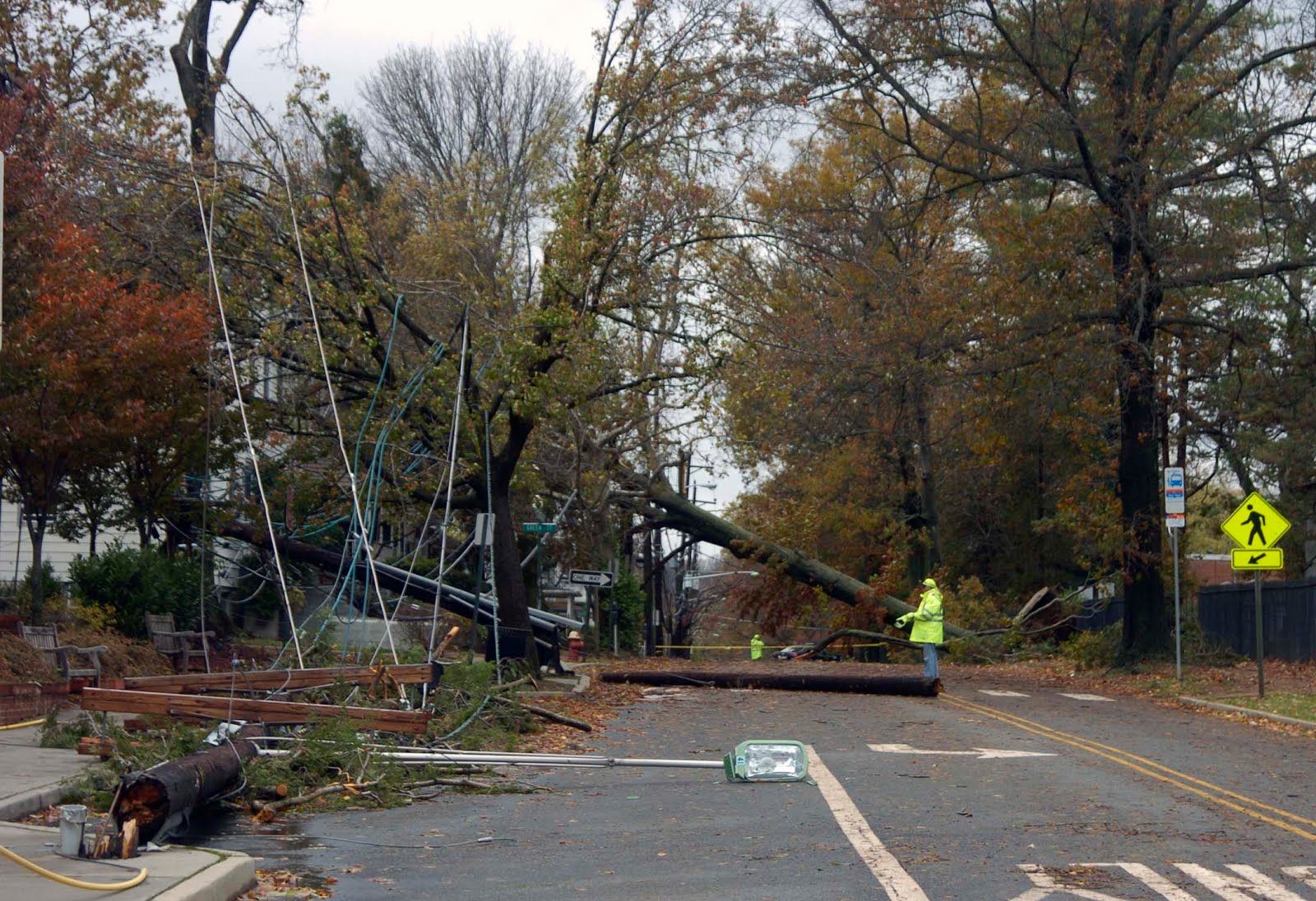By Philip Sean Curran, Staff Writer
Five years ago, Superstorm Sandy socked Princeton with a destructive mix of wind and rain that tested the mettle of first responders and saw the public library become an unofficial recovery center for the community.
The storm that hit New Jersey on Oct. 29, 2012, left thousands of people without electricity, felled trees and power lines and took the life of Princeton resident William Sword Jr., 61, killed when a tree fell on him. The response to Sandy, coming when Princeton was still two separate communities, served as a dress rehearsal for when borough and township government agencies eventually would operate as one.
“It made and required both public works departments to immediately work together, because there was a common goal … to clean up the municipality,” said Robert Hough, municipal director of infrastructure and operations. “So it did help with regard to sort of the coordination between the two departments. And I would say that was across the board in several other departments throughout the municipality.”
Sandy, itself, created a mess. Trees fell, homes lost power and roads became impassible. The weather also tested first responders’ ability to deal with the crisis.
“One of the biggest problems we had was the wind,” said Robert Gregory, municipal director of emergency management. “You had a lot of wind. And there were certain times during the storm were we had to kind of pretty much shut down any response because the wind was at the level where it wasn’t safe for responders to even be outside.”
“Having worked through several hurricanes and lots of major storms, that just dwarfed everything else,” said police Chief Nicholas K. Sutter. “The trees closing roads just everywhere. I remember just the flooding everywhere, including Route One.”
The town had to prioritize the cleanup to make sure emergency services could get around, in a town that had large numbers of fallen trees.
“We knew going in that the first thing we had to do was get the main roads open,” Hough said. “Not everybody was happy. But there were certain streets that had priorities and they had to be taken care of first.”
Gregory said “we had a lot of trees come down and a lot of problems with road infrastructure.”
Sandy caused widespread and extended power outages, such that thousands of residents turned to the Princeton Public Library for refuge that week. Former Library Director Leslie Burger recalled the building did not lose power, so it was open the day after the storm hit and stayed open until around 11 p.m.
“Because so many people were without power, the word got out that the library had power and people came en masse,” she said.
Burger remembered scenes of people powering up their electronic devices, contacting family members to let them know they were OK or simply warming up and being in the company of others.
“It felt like the entire community had been there that day and the days after,” she said. “So we couldn’t give them a shower, but we could certainly give them a restroom and put on a movie and give them books to read and music to listen to. It was pretty great.”
While the community was spared the devastation seen at the Jersey Shore, it took time for the two Princetons to recover and clean up from the mess Sandy had left behind. Hough recalled how some residents did not fully clean out their yards of debris until the next year.
“There was a lot of heavy volume of stuff the following spring that people finally got off their property and out to the street after winter,” Hough said
In October 2012, Princeton Borough and Princeton Township were months away from the historic consolidation of the two municipalities. While the merger would not take effect until January 1, 2013, Sandy required two municipal governments to coordinate their response.
“It was no longer township and borough,” Hough said. “It was Princeton. And it was sort of the start of Princeton becoming one during that event. You could see the management team working together. And then you could see out in the field, obviously, the staffs working together.”
“That was actually the first storm that we addressed from a unified command standpoint, in terms of consolidation,” Chief Sutter said. “That was the first time the emergency operations center of Princeton Borough and Township worked together. That’s a big memory for me, because, obviously, it was a big change in the way we did things. But it served as the foundation for the way we’ve addressed everything since.”
So where is the community five years after Sandy? One town official was confident in how it would respond the next time a major storm hits.
“I think we’re in a much better place for recovery, to build that resiliency, so we bounce back quicker and hopefully get things repaired and replaced quicker,” Gregory said in pointing to how PSE&G and the town have had “an aggressive program” for tree maintenance.
“I think you learn from each experience and you experience something new in each one of these events,” Chief Sutter said. “That one just threw a lot of, kind of, unthinkable scenarios at us all at once. We’ve definitely learned from it.”
He said another lesson he drew is that towns can find themselves alone at times when the state has to focus on more hard hit areas. For that reason, he believes it’s critical that towns be prepared, have the resources and be able to “sustain ourselves.”
“You’ll have county resources available,” said Chief Sutter, “but when the state is hit the way it was, the state’s going to bring the resources to the hardest hit areas. And we kind of realized that you’re almost left to fend for yourself for a period of time until everything gets under control.”

